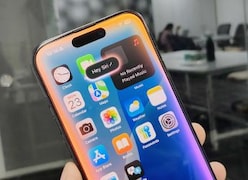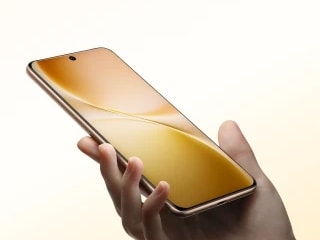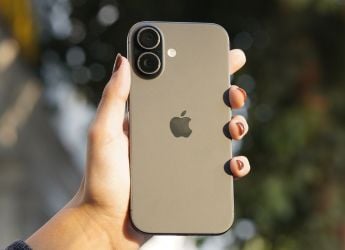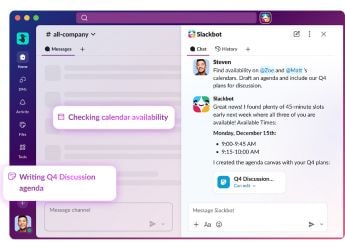- Home
- Mobiles
- Mobiles Features
- Apple Products Are Getting More Expensive. Here's Why.
Apple Products Are Getting More Expensive. Here's Why.

Photo Credit: Bloomberg photo by Qilai Shen
You can't put a price on loyalty. Just kidding, it's $1,000 (roughly Rs. 70,000).
Apple this year became a trillion-dollar company. But it also became the thousand-dollar company: Suddenly you need at least 10 Benjamins to get the best new iPhone or the big iPad Pro.
Apple has never made cheap stuff. But this fall, many of its prices increased 20 percent or more. The MacBook Air went from $1,000 to $1,200 (roughly Rs. 85,000). A Mac Mini leaped from $500 to $800 (roughly Rs. 56,000). It felt like the value proposition that has made Apple products no-brainers might unravel.
For some perspective, we charted out the last few years of prices on a few iconic Apple products. Then we compared them to other brands and some proprietary data about Americans' phone purchase habits from mobile analytics firm BayStreet Research.
What we learned: Being loyal to Apple is getting expensive. Many Apple product prices are rising faster than inflation - faster, even, than the price of prescription drugs or going to college. Yet when Apple offers cheaper options for its most-important product, the iPhone, Americans tend to take the more expensive choice. So while Apple isn't charging all customers more, it's definitely extracting more money from frequent upgraders.
Apple says prices go up because it introduces new technologies such as FaceID and invests in making products that last a long time. Yet it has clearly been feeling price discomfort from some quarters. This week, amid reports of lagging sales that took its stock far out of the trillion-dollar club, it dedicated its homepage to a used car sales technique that's uncharacteristic for a an aspirational luxury brand. It offered a "limited-time" deal to trade in an old iPhone and get a new iPhone XR for $450, a $300 discount.
The company offers trade-ins for many products now. And not everything Apple has gone up in price: An entry-level iMac and iPad have gotten cheaper since 2014, though in both cases the company has since added a new higher-end (and higher-price) "Pro" version to its lineup.
It's a good time to take stock of what you're paying for. Back at the end of 2014, when the iPhone 6 came out, the average price paid for any iPhone was $634, according BayStreet. This year, it'll be $898. (Samsung owners over the same period went from $635 to $710, not accounting for promotions.) Add in services such as iCloud storage and AirPod headphones, and our Apple bill climbs even higher.
Our charts of Apple's rising prices are like a Rorschach test: Some see a tech giant gouging us more for ho-hum upgrades. Others see the increasing usefulness of Apple products in our lives.
What we see is a reflection of a new reality for consumer tech. Most Americans who want a smartphone, tablet or laptop already have one and aren't interested in changing to a new system. Without big subsidies from phone carriers and as product innovation slows, we also don't mind holding on to these products for three or more years. Apple, hoping to charge more every time we do buy, is changing how it gets money from us. So we need to change how we think about its value.
Why Apple charges more
Most technology products are commodities that go actually down in price over time. Apple has worked very hard not to become a commodity.
Take the MacBook Air, the entry-level laptop, which at $1,000 became more common in US college dorms than futons. After letting the laptop's features languish for years while it focused on pricier models, Apple updated the Air in October with a new screen, processor and fingerprint reader. Oh, and that 20 percent price bump, too.
Laptop competition is fierce, and by many measures the new Air can't compete with a leading Windows 10 model like Dell's XPS 13. For the same price as a new Air, the Dell offers a faster processor, more flash storage - and it weighs less, too.
But the specs hardly matter. As any member of the Apple tribe will profess, it's selling far more than sexy hardware. It's an Apple-only operating system that works with all its other Apple-only stuff, like iMessage and iCloud - a (mostly) happy trap that's hard to leave. You're buying access to the Apple Store and customer service, not to mention Apple's aggressive stance on privacy.
Sure, there are things Apple isn't best at anymore, including smartphone cameras and voice assistants. Even if any one of those features or services isn't as good as a competitor, it doesn't much move the needle - the sum is far greater than the parts.
Apple isn't totally ignoring budget shoppers. The iPhone is now available in an incredibly wide band of prices because Apple keeps around older models and drops their prices. You can get an iPhone 7 for $450 (and a 6S or SE for even less through a retailer) or a maxed-out iPhone XS Max for as much as $1,450.
The paradox is that many Apple customers think they must have the latest, trained by Apple marketing to future-proof ourselves. So this year, instead of buying a year-old iPhone 8 at a discount or an iPhone XR (a much less expensive compromise to the top iPhone XS), many customers are just skipping out on an upgrade altogether. "People are looking at the R as the step-down product. Like it's less of a smartphone," says BayStreet's Cliff Maldonado.
That makes sense if you think about Apple as a luxury good. When you're spending that much, who buys last season's stuff? (No surprise, Apple's head of retail used to be the CEO of Burberry.)
The question is: How far can Apple's latest and greatest prices stretch? "Apple is becoming aggressive, perhaps overly so, in pricing the top-of-the-line models of its products," says Rafi Mohammed, a pricing strategy consultant. And that is "putting its loyal relationship with its core customers at risk."
What's changing
Back in 2014, Americans waited about 24 months to upgrade their phones at national carriers, according to Bay Street. Now we're waiting almost 36 months. People will ride their iPhone 6S until its wheels come off.
The reality is that smartphones, like laptops and tablets, haven't been getting dramatically better. There's some interesting new tech on the horizon, but over the past three years, the advances in processor speeds and other capabilities have been hard to feel. That wasn't true in the earlier days of smartphones.
"I could see it going to four years" for phones, says industry analyst Ben Bajarin of Creative Strategies. Especially when software upgrades keep coming through: Apple's latest, iOS 12, still works on an iPhone 5S from 2013.
From our perspective, we get more life out of a phone that we hold on to for three or four years. That's just a hard thing to see.
And Apple has another trick to get us to spend more in the years between the big upgrades: services and accessories. It's got AppleCare+ for when you crack a screen, iCloud to store all the photos that no longer fit on your phone, Apple Music for entertainment - and likely more to come in 2019. Then there are stocking stuffers like cases, ludicrously overpriced dongles, or if Santa's feeling very generous, AirPods and Apple Watches. A certain Apple logic kicks in: I spent so much on this, maybe I'll spend even more to get the most out of it.
Apple made 16 percent of its revenue from services in the most recent quarter and signaled that it was the company's new focus by announcing it will no longer even disclose how many phones it sells.
So what should you do if the price of Apple loyalty is getting hard to swallow? There's always the option of moving to a different tech tribe. It's hard to find an alternative for all the problems Apple solves, though Google is trying to replicate some aspects of the experience with its Pixel smartphones and Home speaker devices. (Those products aren't much cheaper, though.)
So far, there's little evidence many are interested in switching. "I don't think people are going to say this is too expensive, so I am going to switch to Android," says Bajarin. "Your regular consumer just wants guarantees. They want to know that what they bought works and rarely stray from what they're familiar with."
Instead, you might ask: How many Apple products do you really need? Just because you have an iPhone doesn't mean you need the $350 HomePod to listen to music. (It's now easier to avoid that hardware: Apple last week announced it would make Apple Music subscriptions available on Amazon Alexa devices such as the $50 Echo Dot speaker.)
Beyond that, it's about recalibrating our upgrade urge. Apple devices really do last a long time, all the more so with the inexpensive battery replacements Apple is offering through the end of the year. If your iPhone breaks, used ones available on eBay can still work great for far less money.
Or: Before buying the new thing after one of Apple's launch events, wait a month until the buzz settles. If the product doesn't still seem very revolutionary, it's a safe bet to save your money by holding on for another year. Or four.
© The Washington Post 2018
Catch the latest from the Consumer Electronics Show on Gadgets 360, at our CES 2026 hub.
Related Stories
- Samsung Galaxy Unpacked 2025
- ChatGPT
- Redmi Note 14 Pro+
- iPhone 16
- Apple Vision Pro
- Oneplus 12
- OnePlus Nord CE 3 Lite 5G
- iPhone 13
- Xiaomi 14 Pro
- Oppo Find N3
- Tecno Spark Go (2023)
- Realme V30
- Best Phones Under 25000
- Samsung Galaxy S24 Series
- Cryptocurrency
- iQoo 12
- Samsung Galaxy S24 Ultra
- Giottus
- Samsung Galaxy Z Flip 5
- Apple 'Scary Fast'
- Housefull 5
- GoPro Hero 12 Black Review
- Invincible Season 2
- JioGlass
- HD Ready TV
- Laptop Under 50000
- Smartwatch Under 10000
- Latest Mobile Phones
- Compare Phones
- Samsung Galaxy A07 5G
- Vivo Y500i
- OnePlus Turbo 6V
- OnePlus Turbo 6
- Itel Zeno 20 Max
- OPPO Reno 15 Pro Mini 5G
- Poco M8 Pro 5G
- Motorola Signature
- Lenovo Yoga Slim 7x (2025)
- Lenovo Yoga Slim 7a
- Realme Pad 3
- OPPO Pad Air 5
- NoiseFit Pro 6R
- Xiaomi Watch 5
- Acerpure Nitro Z Series 100-inch QLED TV
- Samsung 43 Inch LED Ultra HD (4K) Smart TV (UA43UE81AFULXL)
- Asus ROG Ally
- Nintendo Switch Lite
- Haier 1.6 Ton 5 Star Inverter Split AC (HSU19G-MZAID5BN-INV)
- Haier 1.6 Ton 5 Star Inverter Split AC (HSU19G-MZAIM5BN-INV)
















